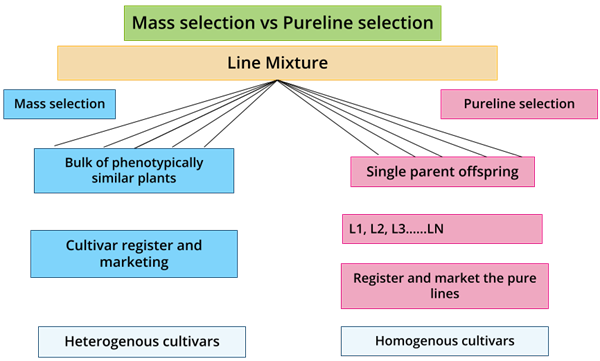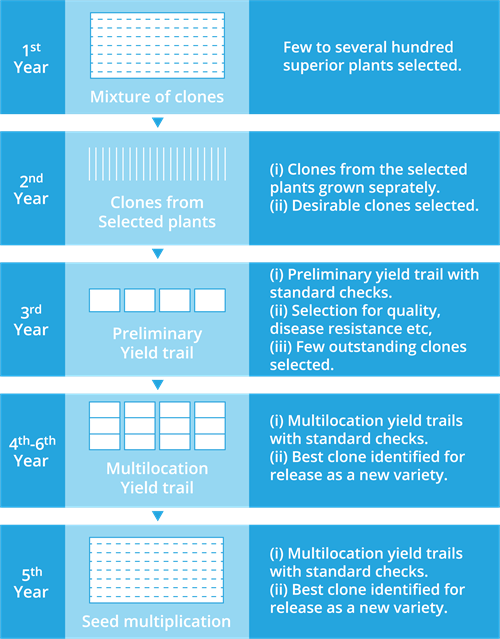
PUMPA - SMART LEARNING
எங்கள் ஆசிரியர்களுடன் 1-ஆன்-1 ஆலோசனை நேரத்தைப் பெறுங்கள். டாப்பர் ஆவதற்கு நாங்கள் பயிற்சி அளிப்போம்
Book Free DemoIn the previous theories, we saw what is selection in plant breeding and what is mass selection. Let us look at the other types of selection.
B. Pureline selection:
Pureline is “the progeny of a single individual obtained by self breeding”.
It is also known as individual plant selection. Johannsen, in the year 1903, coined the word "pureline". Pureline selection involves selecting a large number of plants from a self-pollinated crop and harvesting them individually.
Plant progenies from each of them are evaluated independently. The best among them is developed as a pureline variety. The progeny produced is similar both genotypically and phenotypically. The variety produced is highly uniform.
The disadvantages of pureline selection:
1. Genetic variation is absent.
2. Pureline variety has a narrow adaptation.

Mass selection vs Pureline selection
C. Clonal selection:
Clones are a group of plants that are formed from a single plant by vegetative or asexual reproduction.
The plants of the clones are also genetically and phenotypically identical.
The selection of desirable clones from the mixed population of the vegetatively propagated crop is called clonal selection.
The varieties produced from clonal selection keeps up genetic constancy. Thus, the desirable traits can be maintained for a long time.

Clonal selection
1. The variety evolved through clonal selection retains all the desirable characteristics of the parental clones for several years.
2. Clonally propagated varieties are highly stable as there is no risk due to recombination.
3. It is an effective method for isolating the best genotype from a mixed population of asexually propagated crops.
The only disadvantage is that it cannot create any new variability, and therefore genetic makeup cannot be improved by this method.
A video that shows what is selection in plant breeding and the types of selection methods: